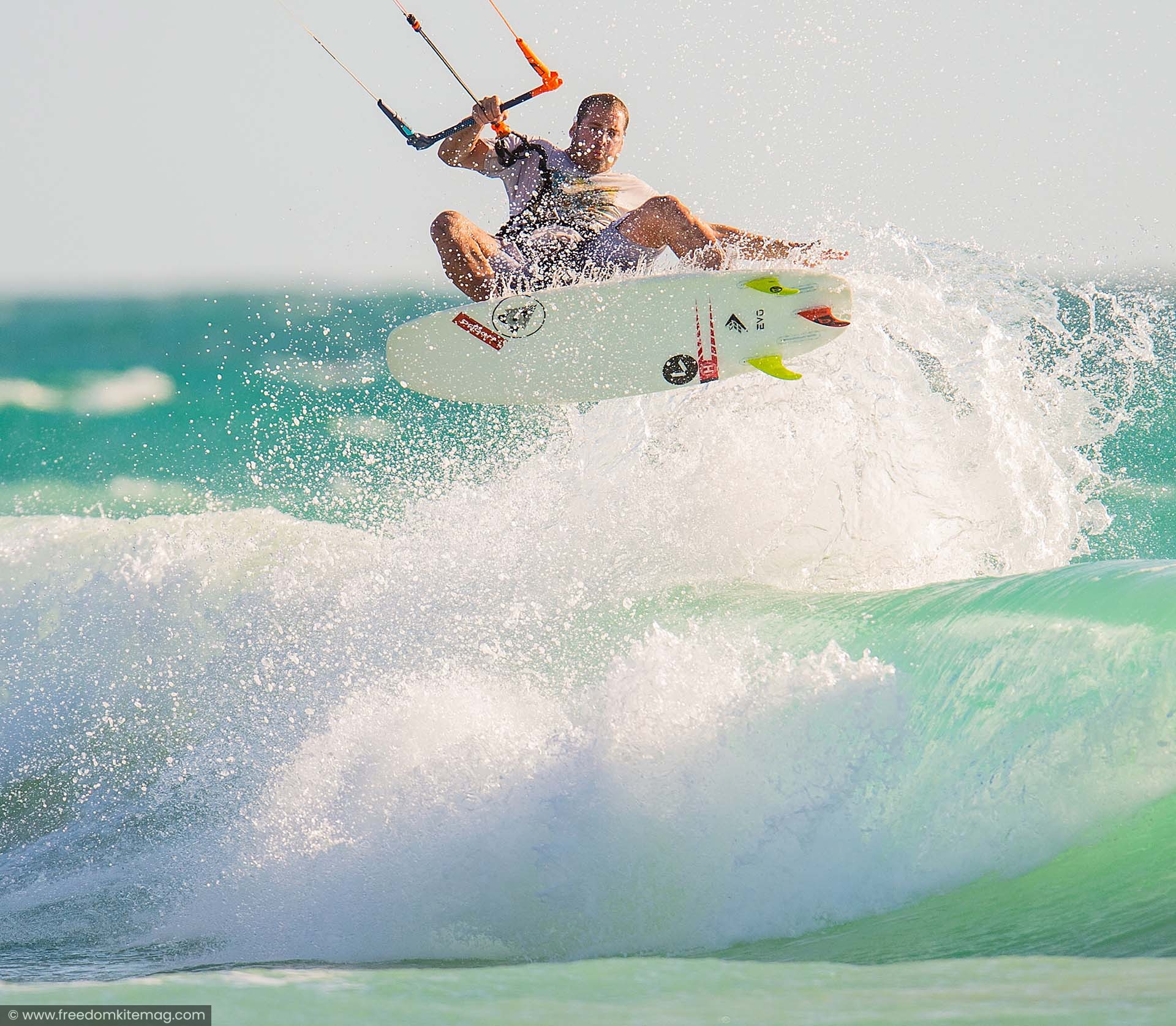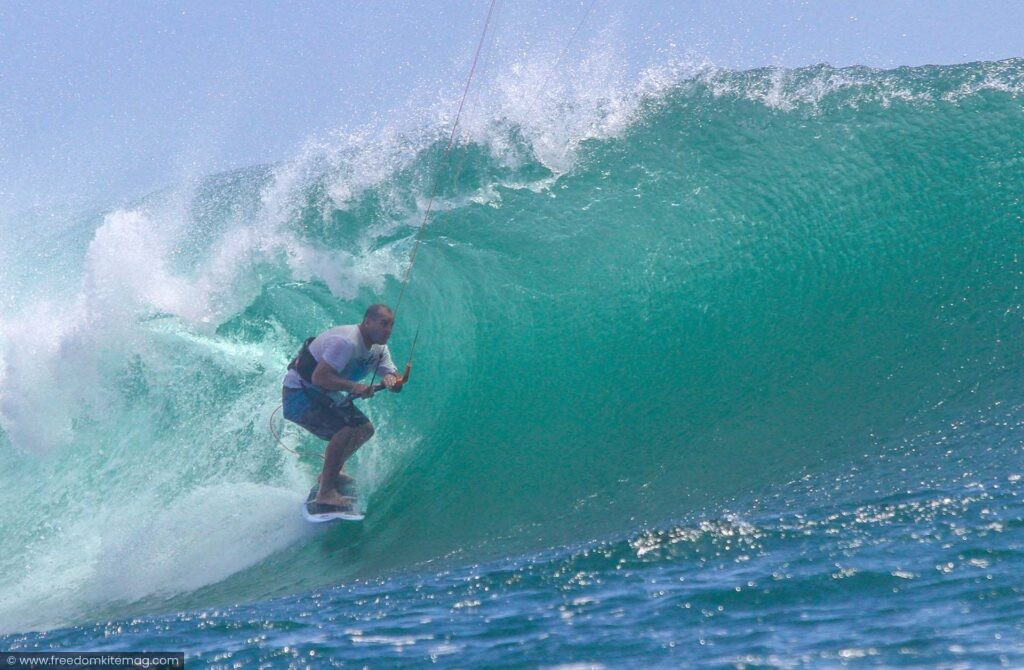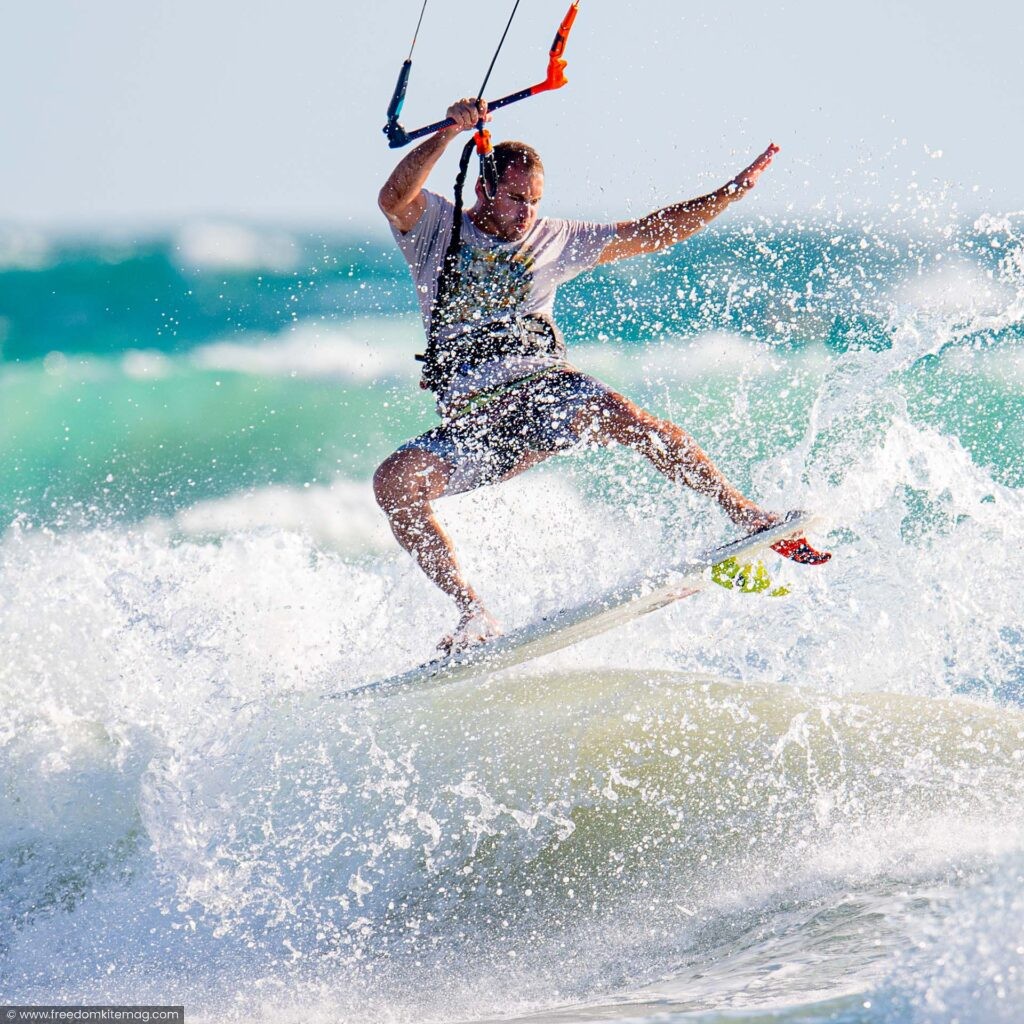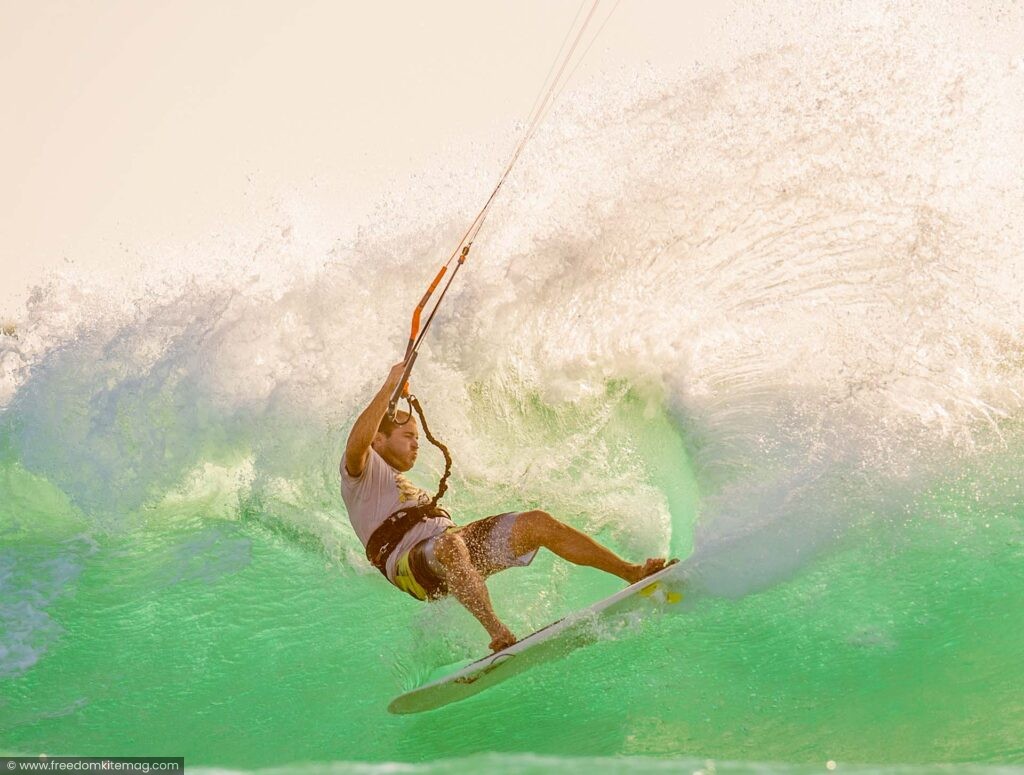
Pics by Gordon Pettigrew
FKM: So, tell us a little bit about what fin systems you like to use?
RYLAND: Well, about 99% of my boards use Future boxes. I think they’re a way stronger connection to the board for all types of fins. And especially for kiting. I’ve been using Future bases for probably 10, 15 years, or whenever they came out I guess.
FKM: Why do you prefer future boxes over FCS?
RYLAND: The original FCS 1s with just the two single tabs, when they came out, they were great. For surfing they work, because if you hit the reef, they snap easily and you’re not going to rip out a box that much.
But they also can break a little bit too easily kiting, just even on a bottom turn, not even hitting anything. I’ve had them snap on me for years, so that’s sort of why I’ve gone away from FCS 1 style. With FCS 2, now have got the click in, click out, which is a bonus. But if you do knock something on the back of your fin, whether it be washed up on a sandbar or something, or dumped by a wave and the back of the fin hits sand or reef, they can pop out. So I end up chucking a screw in them anyway. So if you’re going to put a screw in, I think the Future base having one big solid base, from the front of the fin to the back of the fin, and one screw is by far the most robust and most uncomplicated system out there.
And that’s what I would recommend for anyone looking at a new board.
I know Duotone do that multi-box so you can run Futures or FCS. That’s an excellent system. Especially if all your boards now are FCS and you want to move to a stronger base, with the option of being able to put Futures in.
FKM: Ok and your choice for fins?
RYLAND: The last two years all I’ve been running is Quobba fins. Up until about a year ago, I was mainly using the orange, which are the mediums, but now they’ve got a large available, which they didn’t have before. So I’ve been using a large a lot more. I’m around 95kgs, So I find around sloppy two-foot beach breaks, I’ve been running the lime green large as my two side fins, and an orange medium as my centre fin on a thruster set up. And then, if I’ve been playing around with quads, I’ve been using the lime green large as my front sides. And then for the rears, I’ve just been mixing it up with a bunch of old Future fins and that, that I have lying around. Just playing around with a few different styles. But yeah, probably 99% of the time riding Quobba fins solely.
FKM: How important is it to you to use quality fins when your kiting?
RYLAND: With kiting the main thing people need to understand is you require a lot stronger fins than you do when you’re surfing. Because when you surf, if you have a really good session and you get 15 waves that go for 10 seconds each, you’re only on your board two to three minutes in a whole surf. Whereas, if you go for a kite, generally, I’m on my board an hour and a half continually edging against my fins, turning a lot harder against them than I do surfing. So just the overall strain is a lot more on your fins when you’re kiting, as opposed to when you’re surfing. So you do need a really strong fin if you want them to last, and you want them to hold when you’re at the bottom turning, or coming off the top. So yeah, a durable, strong fin is something that I look for.
FKM: What makes Quobba fins good for kiting over other fins? I’ve seen they have a pretty unique shape what is all that about?
RYLAND: The whole design and idea behind it is to create a vortex or vortex’s and lift, which then creates less drag. I’m not exactly sure of all the scientific terms, but that’s the general idea without getting too techy. They studied the shape of aeroplane wings and also looked at the worlds fastest fish and their tails and side fins etc. After years and years of research and prototypes have come up with a unique fin that isn’t a gimmick, with studies and testing results to back up all their claims. Let’s be honest; fins haven’t changed much in the last 20 years. Different materials and flex patterns are about it. But as far as new shapes go not many companies have done much in this design area, so they are onto something pretty unique, and have the next 20+ years covered with every patent under the sun worldwide. With kiting, we have a lot more power we can harness and generate as opposed to surfing. Traditional fins can only handle so much speed before they max out and cavitate, and you speed wobble or skip out on a turn. But with this design, the speed you can hang onto is a lot higher which in turn means you can also drive and push a shit load harder off your fins than a regular shape.
FKM: And what types of construction are available?
RYLAND: QUOBBA fins are working on a couple of new models and products at the moment. They use a polymer and glass construction at the moment. This year they are also releasing something called carbon glass, which is a new more robust polymer glass construction- available any day now to the public. Not sure on the exact ratio, but 30 to 40% carbon, and 60-70% polymer. And then they’ve also got a full carbon series coming out, which is mainly carbon and polymer.
The carbon series, I’d say, is for bigger waves or guys that like riding powered up and like a real stiff fin. Also, probably great for towing and that sort of thing. But general strength and all-around riding, I’d recommend the carbon glass. It’s a good compromise between the two. A right blend of the two products and way, way more robust than anything else out there.
FKM: So thruster or quad set up. How do you usually kite, and why?
RYLAND: The old thruster versus quad debate. I’ve always been a thruster man myself. I do like quads, but they’re not as predictable. So by that I mean some conditions they suit it well, and then the next day you might take the board out with a quad set up, and I hate it, you know? So it just depends on day to day with quads, where I find with thrusters, they always feel good. There might be some days where a quad might be better suited, but I never have a bad session on a thruster set up. So that’s why I go thrusters, just because I find that, generally, they’re more suited to most conditions.
FKM: WHY do you put a smaller fin in your back centre fin?
RYLAND: Size-wise, having a slightly smaller trailer, just loosens the board up. My local kite break is generally one to two foot. The waves are pretty short and dumpy. So just having a board that’s a bit looser, you can throw it around a lot easier with a smaller back fin. Just makes it more fun. As soon as I chuck a bigger fin in the back, I notice that my turns are a lot more drawn out. Probably a bit more controlled with a bigger fin. But yeah, I like to slide the fins out and I’m just having more fun in smaller surf with a smaller fin in the rear.

FKM: So, do you experiment with different stiffness?
RYLAND: Again, it just depends on what conditions I’m in. Big barreling waves, you want a pretty stiff fin, but you want a bit of flex too so you can stall out your bottom turn, then really drive off your fins and get a bit of flick and spring so you can backdoor a section if it’s barreling.
Small surf, real stiff fins – I don’t like. When you’re coming off the bottom, you get that extra hold, but you also don’t get that spring to flick off the bottom, or flick out of the top that you do when your fins have got a bit of flex to them. So yeah, it depends on the conditions. Generally, medium to small surf I like a flexier fin. And then medium surf, a medium flex fin. And then real big surf or towing, I’ll generally pick a pretty stiff fin that will just hold the best.

Thanks Ryland!
For more great articles like this check out Issue 10 of Freedom Kitesurfing here!



